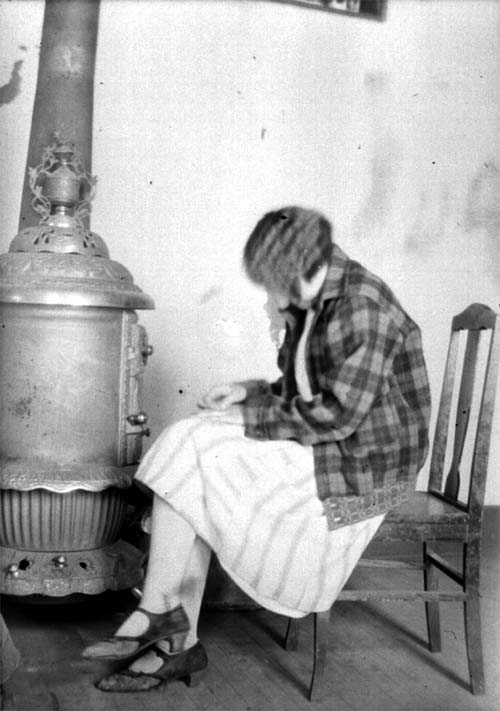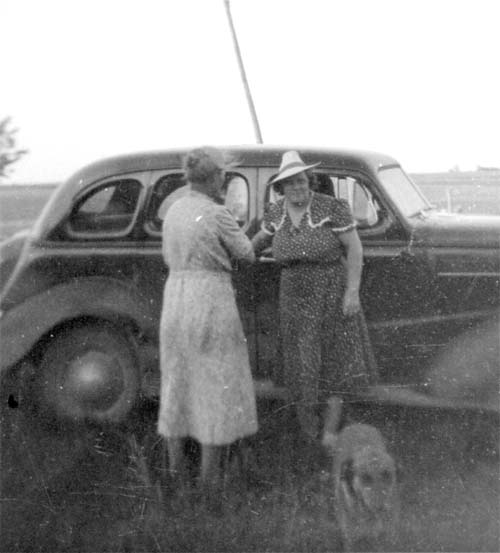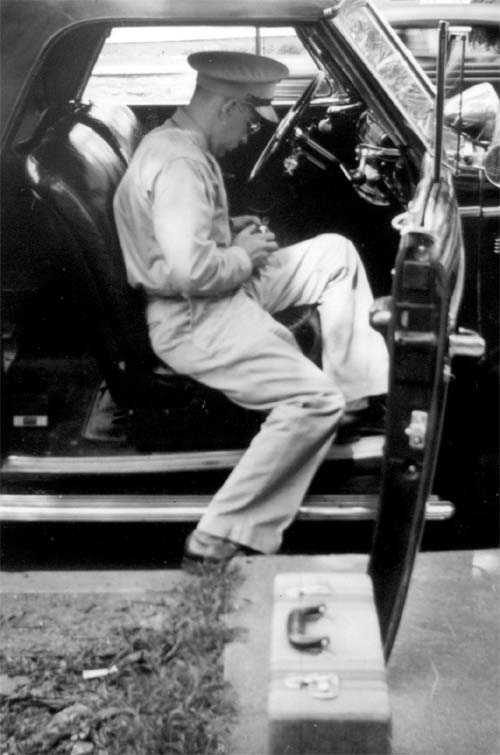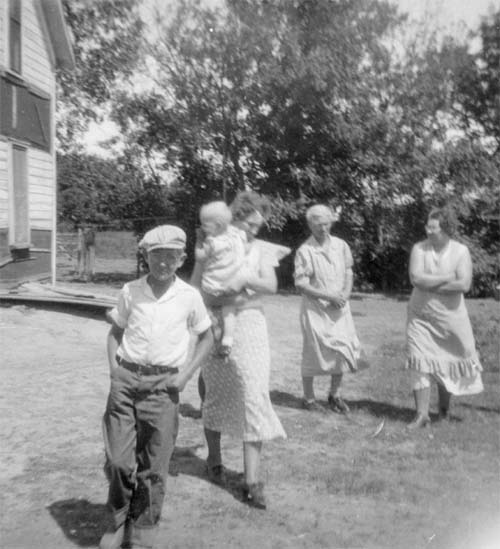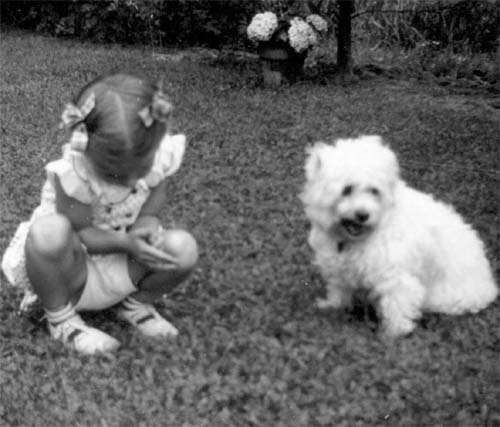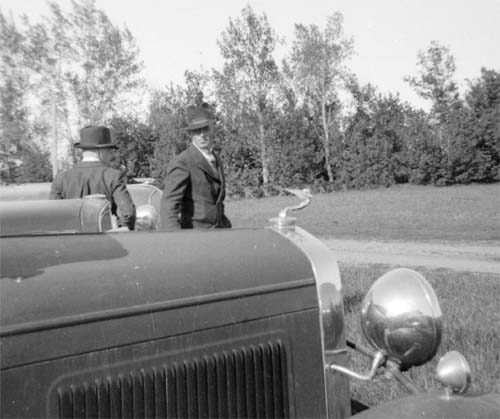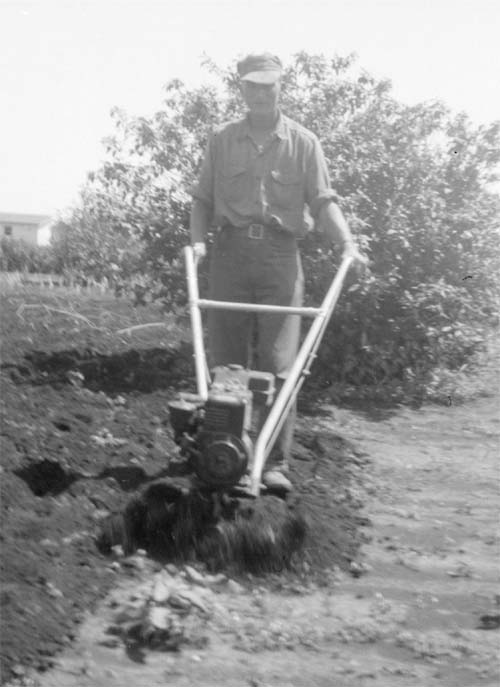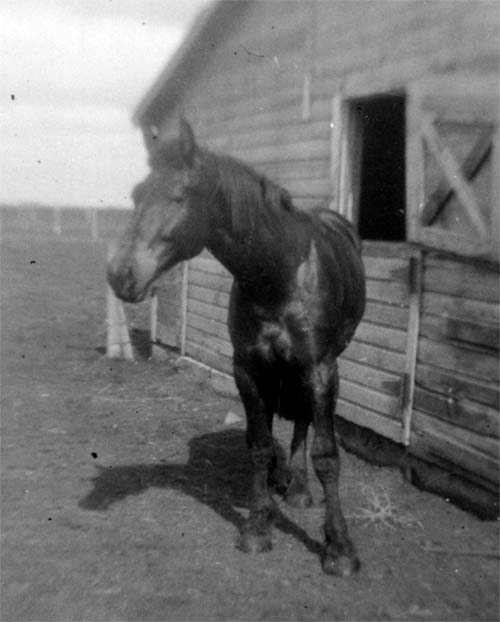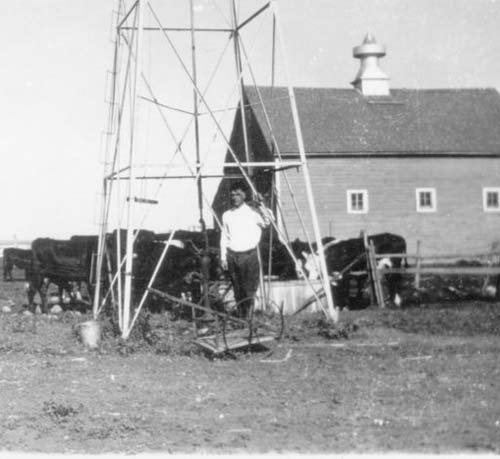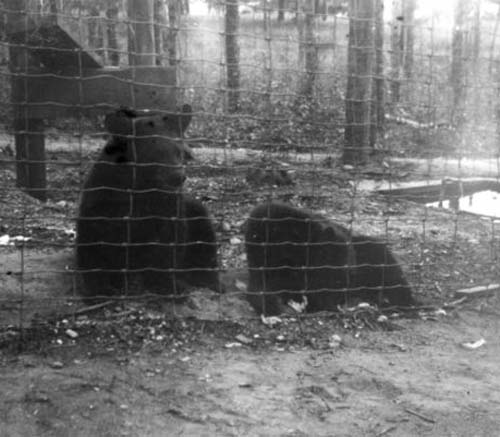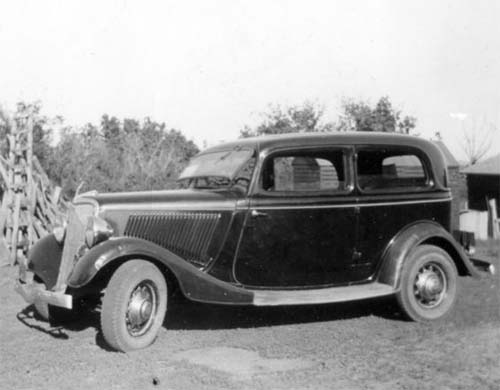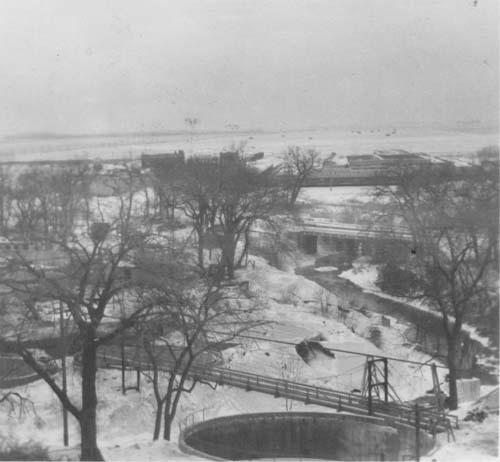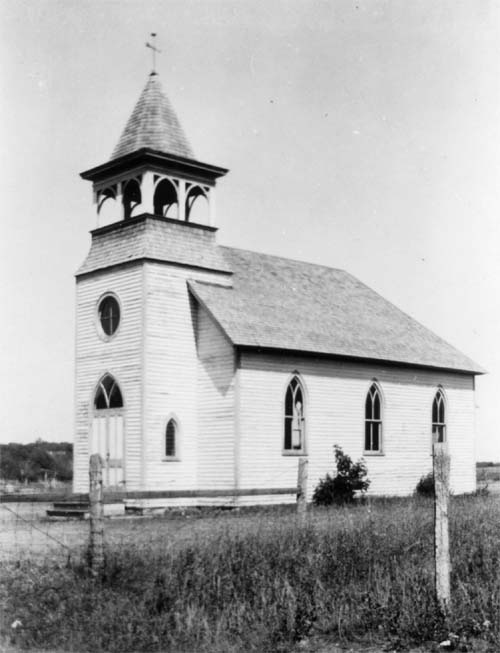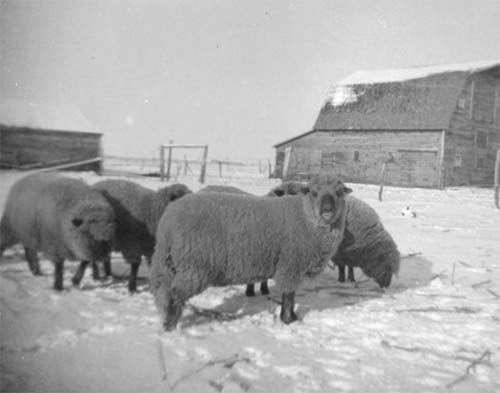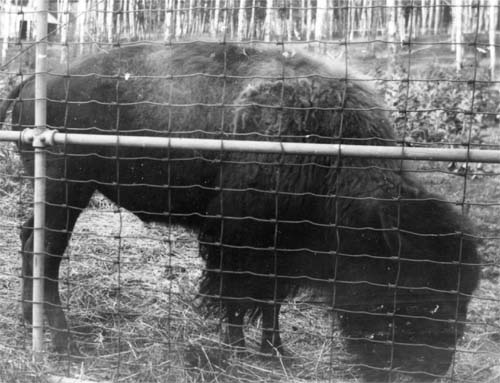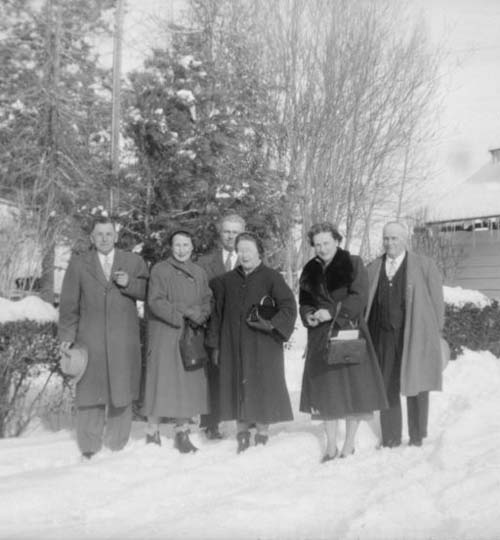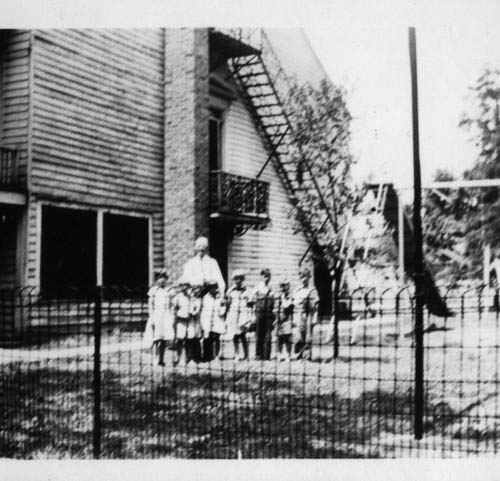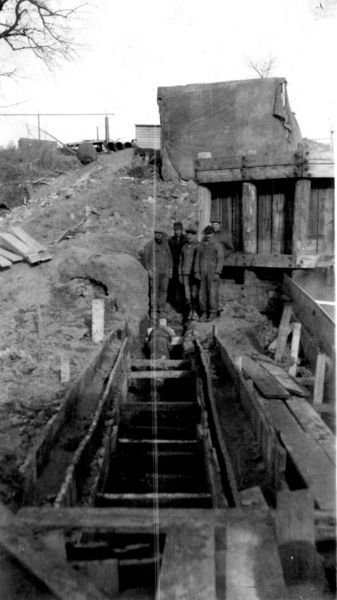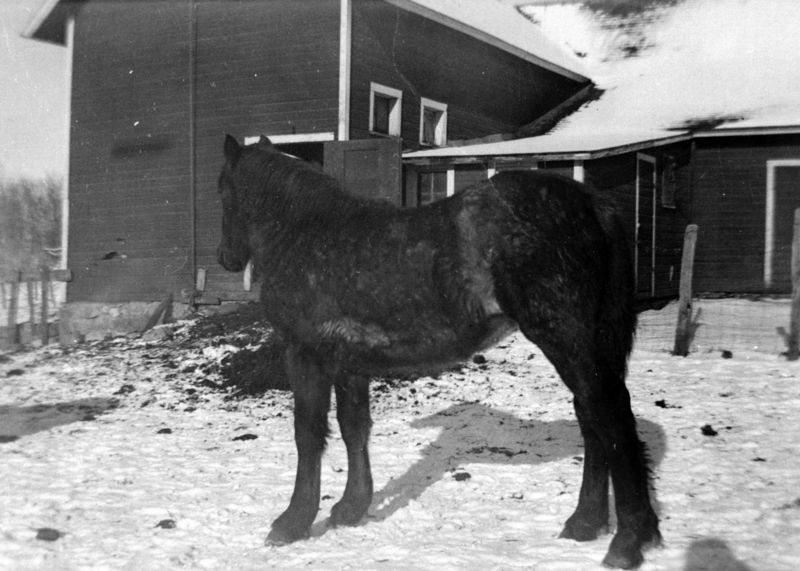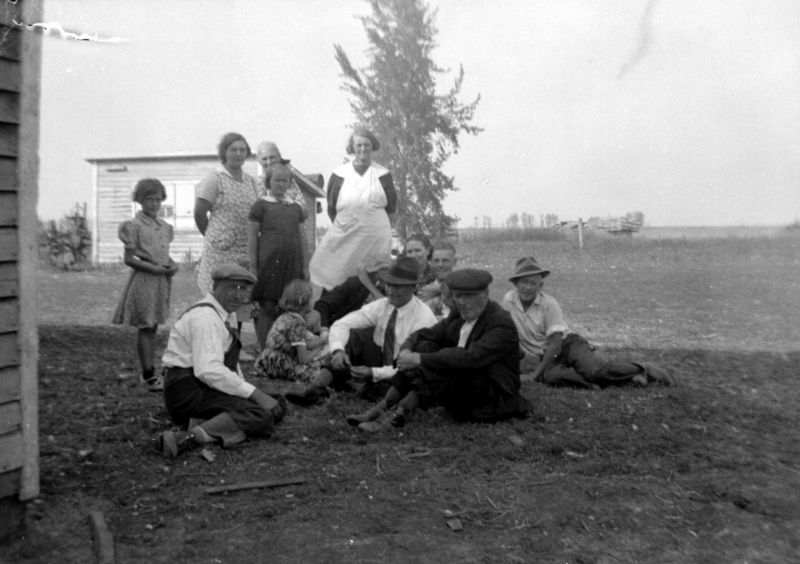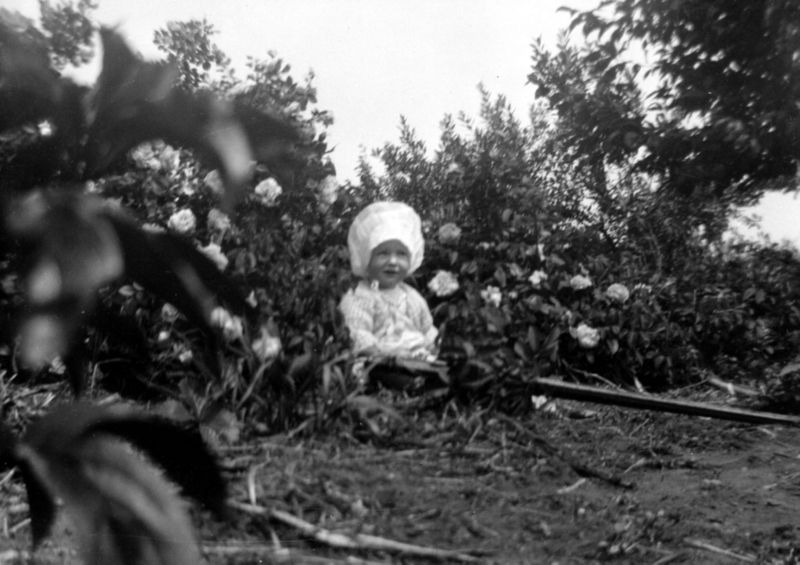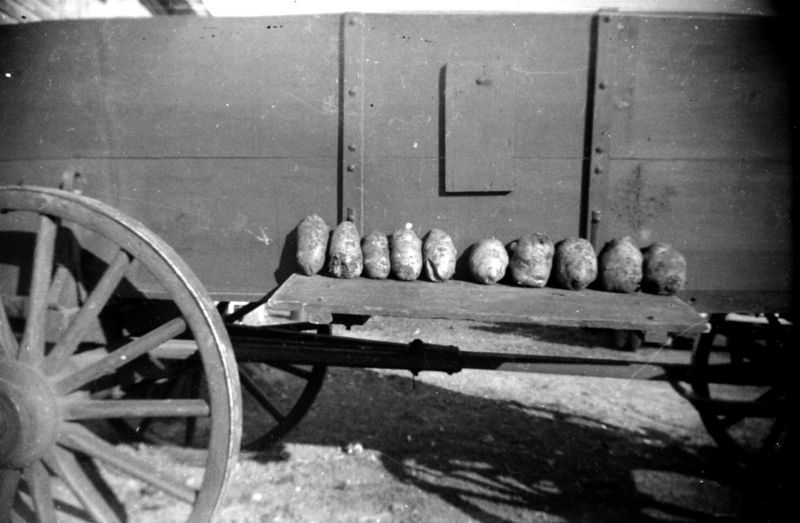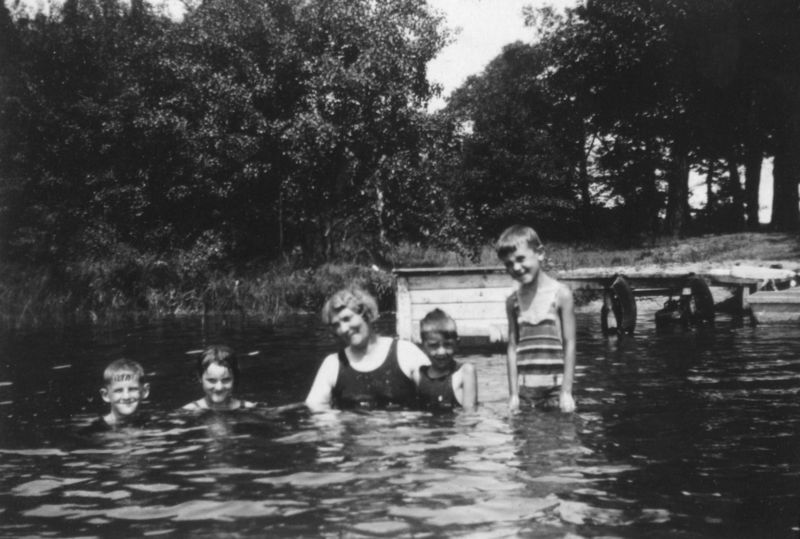 |

| |
|
|  |
Rural School, 1930s.
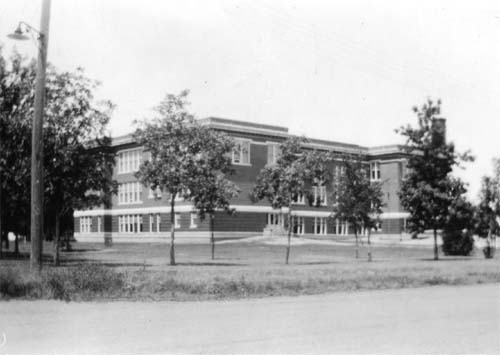
Click for full image A rural brick school, done in the style of numerous schools that were built during the 1920s and 1930s. Few rural school-buildings are still operating as schools today; if they are, the original building has been added on to numerous times over the past seventy years to accommodate growth or consolidation. Others have been torn down, sit in disrepair, or — the lucky ones — have been taken over by the historical society, an antique shop, or some other business and restored to usefulness. Labels: 1930s, architecture, rural, school
Swimming Under The Bridge, 1930s.
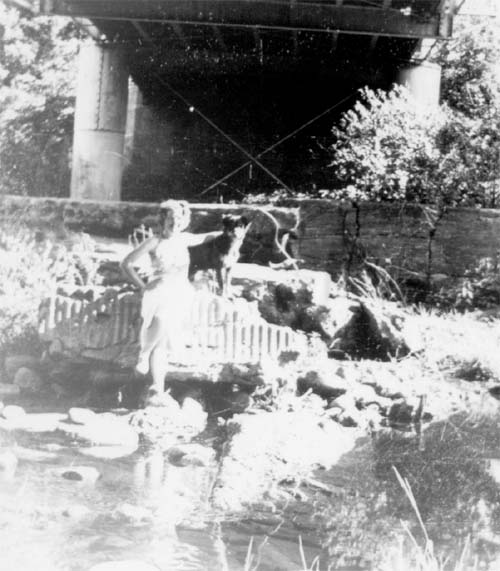
Click for entire imageI'm not sure why: I've seen lots of pictures of people swimming, hanging out beneath a bridge. I figure it is to stay out of the sun, but it could also have to do with the ground being built up and cleared for the bridge, which makes a functional beach. This lady and her dog are cooling off in the river. 1930s. Labels: 1930s, dog, river, swimming
Soldier, Convertible, Suitcase, 1930s.
Rototilling The Garden, 1930s.
Horse In Barnyard, 1930s.
Cattle And The Farmer, 1930s.
Scenic North Dakota Winter, 1930s.
Gothic-Revival Church, 1930s.
Sheep in Snowy Barnyard, 1930s.
Snowy Driveway Family Photo, 1930s.
Small-Town Country Road, 1930s.
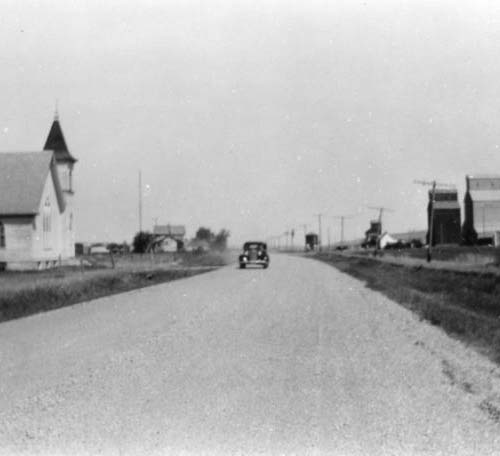 Driving through the plains or Minnesota, North Dakota, or South Dakota, many small towns still look like this today: Grain elevator, church, a handful of houses, and then just more open farmland. It's likely that buildings from the 1930s are still standing, although they're far more run-down than they looked eighty years ago. This photo was taken sometime in the mid-1930s, location unknown. ( click for full image) Labels: 1930s, church, grain elevator, small town
Children and Playground, 1930s.
The Mysterious Talking Board Ouija! 1930.
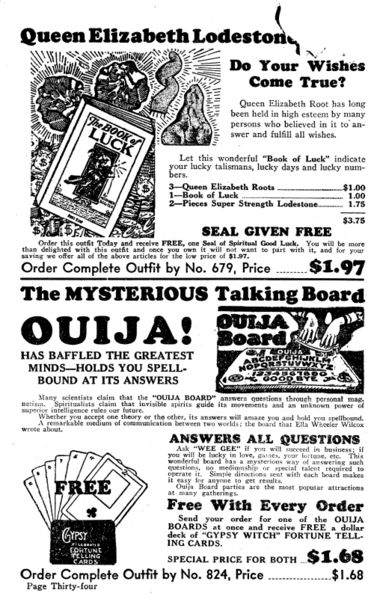 "Many scientists claim that the "Ouija board" answers questions through personal magnetism. Spiritualists claim that invisible spirits guide its movements and an unknown power of superior intelligence rules our future," claims this 1930 advertisement for the Ouija board. Unsure how to pronounce the pormanteau title? The article alternatively refers to it as the "wee gee" board, preventing any confusion. Simple directions were sent with each board, and it claims Ouija Board parties "are the most popular attractions at many gatherings." From the Model Publishing Catalog. Labels: 1930s, magic, model publishing company, ouija board, spiritism
1930s Ford 5-Window Coupe
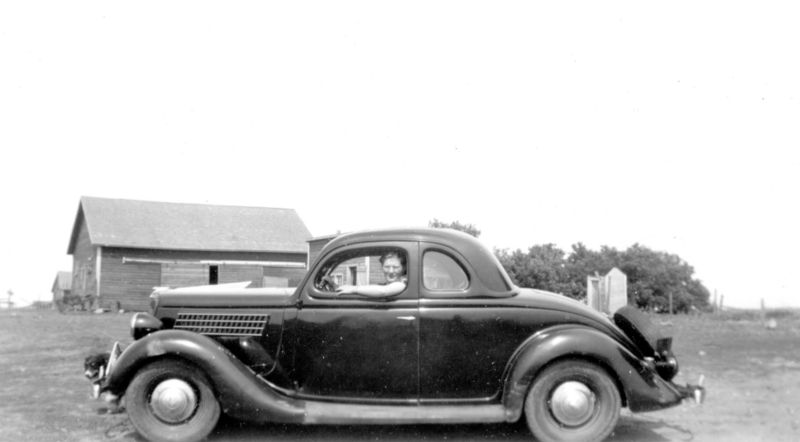 5-window Ford Coupe, 1935 or 1936, with an odd hood ornament: it looks more like a Buick ornament than other Fords of the time, or it could be aftermarket. There also appears to be an interesting 'fin' running down the center of the hood, but that could be something in the background. Taken in the mid-1930s. Labels: 1930s, 1935, 1936, cars, coupe, ford
Horse in Barnyard, 1930s.
Riding The Dog, 1930s.
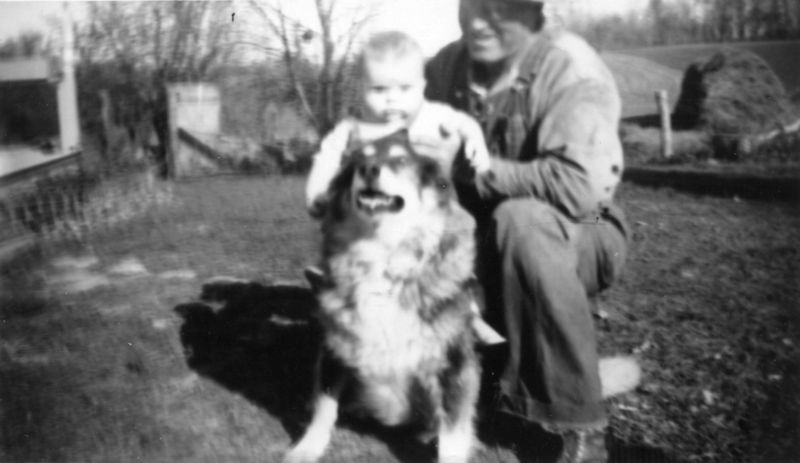 Baby, appearing to ride a dog, with the help of an older man in farming clothes. Appears 1930s. Labels: 1930s, baby, dog, grandpa
Shady Side of the House, 1930s
Radium Baths For Your Health
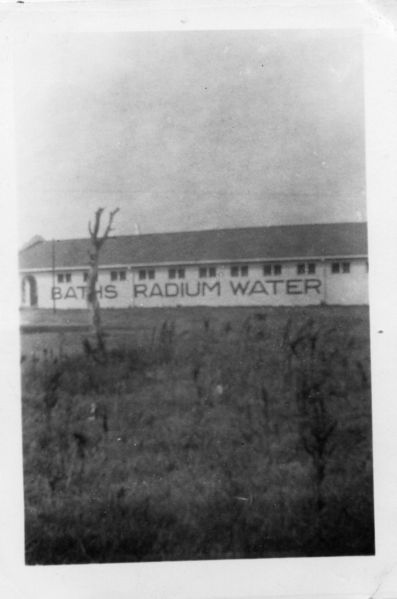 Combining bathing and radium doesn't strike me as a wise idea: as the name alludes, radium is a highly radioactive element that decomposes into Radon, another not-so-healthful element. Back in the 1920s and 1930s, however, radioactive compounds were seen as quite the opposite: a curative, capable of curing pretty much whatever ails you. Radium was relatively stable ('relatively' when it comes to radioactive elements), common enough to be available to quacks everywhere, and just radioactive enough to not cause instant death. On top of it all, radium was naturally-occurring, and with the new radiation-detecting apparatuses developed at the beginning of the Atomic Age, people were amazed to find out just how much radiation existed around them. They began looking for hot-spots, and soon discovered that some of the natural mineral baths made a Geiger counter sound like a flamenco tapdancer. So, if you were interested in going to the spa, you might pass up on the average, non-radioactive hot-water mineral spa and visit a radium spa like the one on the right...while it wasn't immediately deadly to casual users, the already-ill tended to continue to get sicker, so they used more radium-laced products, and got sicker, so they got more radium...you get the idea. Just going home wasn't necessarily going to get you away from radium - if you couldn't make it to the spa, you could irradiate your own water at home, or buy the stuff pre-packaged. All of these photos are slightly blurry -- it makes me wonder just how much was the photographer, and how much was the proximity to radiation. That dead, scraggly tree in the foreground should have been a clue. Labels: 1930s, quack, radioactive, radium, spa
Portable Radios: Root of Modern Technology
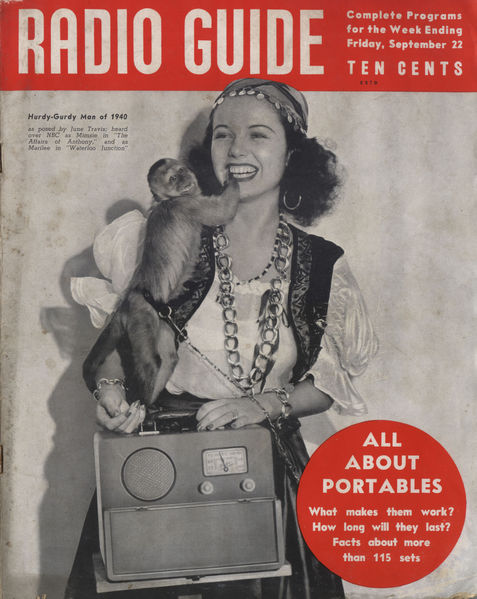 This is where it all started: you might argue that it was the portable record player, or the Walkman, or the laptop, or the iPod, but portable personal electronics started in the 1930s with the advent of portable radios. As a revolution, the cover shows just how large the jump was from the last comparable technology. The magazine compares a person carrying a portable radio to a hurdy-gurdy street performer. The concept of carrying around a small box of audible music was unbelievably new for the time -- music boxes were one thing, but a broadcast receiver was beyond anything that had been seen before. It didn't replace anything, like the lineage from cassette to CD to MP3; it struck out in uncharted territory. Battery powered equipment was not new; before mains were run to homes, everything was either battery-powered or hand-powered. The advent here is miniaturization. Vacuum tubes were the size of a fingertip and required far less electricity to run their internal parts than ever before, and smaller compact batteries had the oomph to power them. This continues to be the focus of today's portables: how much can you fit into the smallest case? The article in the magazine reads, on one hand, like it's been transcribed and word-replaced every year for the past hundred: Now you can take it with you, smaller technology improves weight and portability, new power sources get you longer operation times, includes headphones for private listening, and people are integrating it into their daily lives. The details are delightfully dated, but are easily echoed with modern technology. Celphone users can immediately sympathize with a person of 1930 seeking a a signal while deep inside a steel-structured building. People still attend sports events with a media-receiver, to not only see the event live but get up-to-the-minute commentary from outside sources. And, lastly -- a point that the article emphasizes without divining the social cost -- people demand the ability to take their personal, in-home media with them wherever they go. As the adage goes, the times may change, but people will remain the same, whether they've got a 10-pound AM radio slung over their shoulder or a fully-featured computer in their pocket. Labels: 1930s, 1939, portable radios, radio guide magazine
Leatherheads: North Dakota High School Football, 1930s
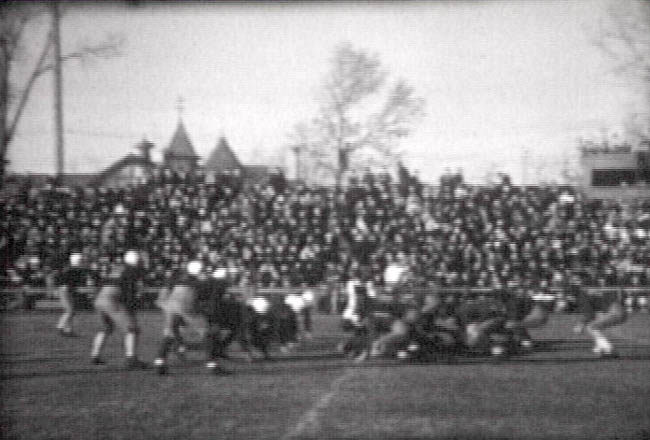 Yeah, you could consider this a tie-in to the new movie Leatherheads ( opening today across the country!), but it's as good an excuse as any to show an old movie of leather-helmeted football I own. The video linked above was part of a very small film-reel from the late 1920s or early 1930s; it couldn't be any earlier, because the buildings depicted weren't around before 1927. The first 80% of the film is an Armistice Day parade, which, of course, sets the date as November 11th. The last few minutes of the film, however, shows the Fargo-Grand Forks football game that evening, held on NDSU's football field. Not much is shown, however it's probably the oldest movie of North Dakota high school football on the internet. Sure, it doesn't have any George Clooney, but it's real high school football, the way it once was: full of bruised faces. Labels: 1930s, film, football, north dakota
Bob, Flipo, and Elmer
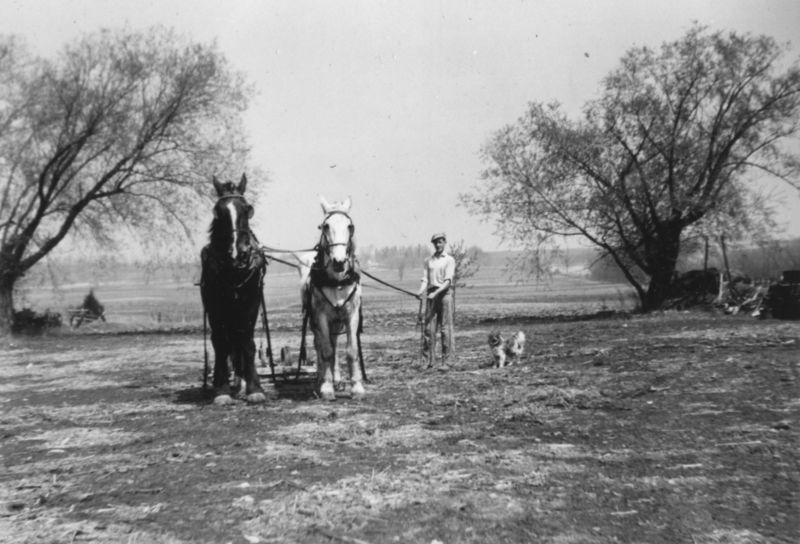 This photo was titled, " Bob, Flipo, and Elmer." However, we've got four entities in the photo: Two horses, a man, and a dog. So, who's who? Elsewhere in the album, we've met an " Elm", which is probably short for Elmer, and a Brownie, that looks a bit like this dog. So, that means the horses are named "Bob" and "Flipo." What are Bob and Flipo doing? It looks like they're hitched to a drag of some sort, scraping the surface of the ground to turn the turf under and either prepare it for planting, or just turn the weeds under so they don't become too unmanageable. Labels: 1930s, 1938, farming, horse names, wisconsin history
Thumb Problem
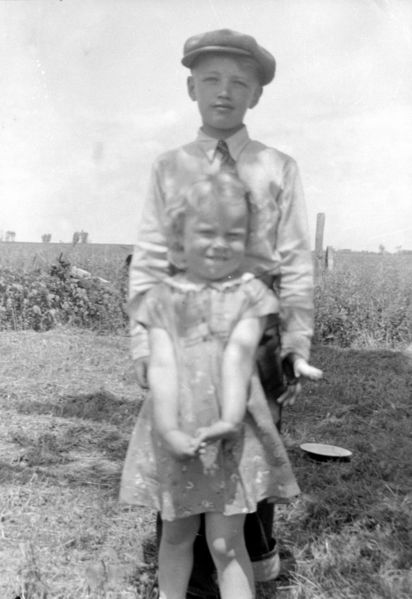 Poor lad -- broken a thumb at such a young age, then made to get all dressed up for family. He does appear to have a brace (the black in his palm), which would indicate a pretty serious break, and the lack of our ultra-modern materials means it looks a lot worse than if you broke it today. These days, we have flesh-colored or transparent high-strength tape and carbon-fiber braces that make it all but invisible. In the thirties, they had cloth tape -- or that might even be a plaster cast. Also, remember this farm was probably a good 5 to 10 miles from the nearest town...if they went to a doctor at all. If a neighbor or even dad was handy with medical supplies, the only doctor consulted was a copy of the Modern Home Medical Advisor that came free with $10 of groceries down at the Red Owl. (from this set)Labels: 1930s, broken thumb, kids, minnesota history
Howie and his Truck
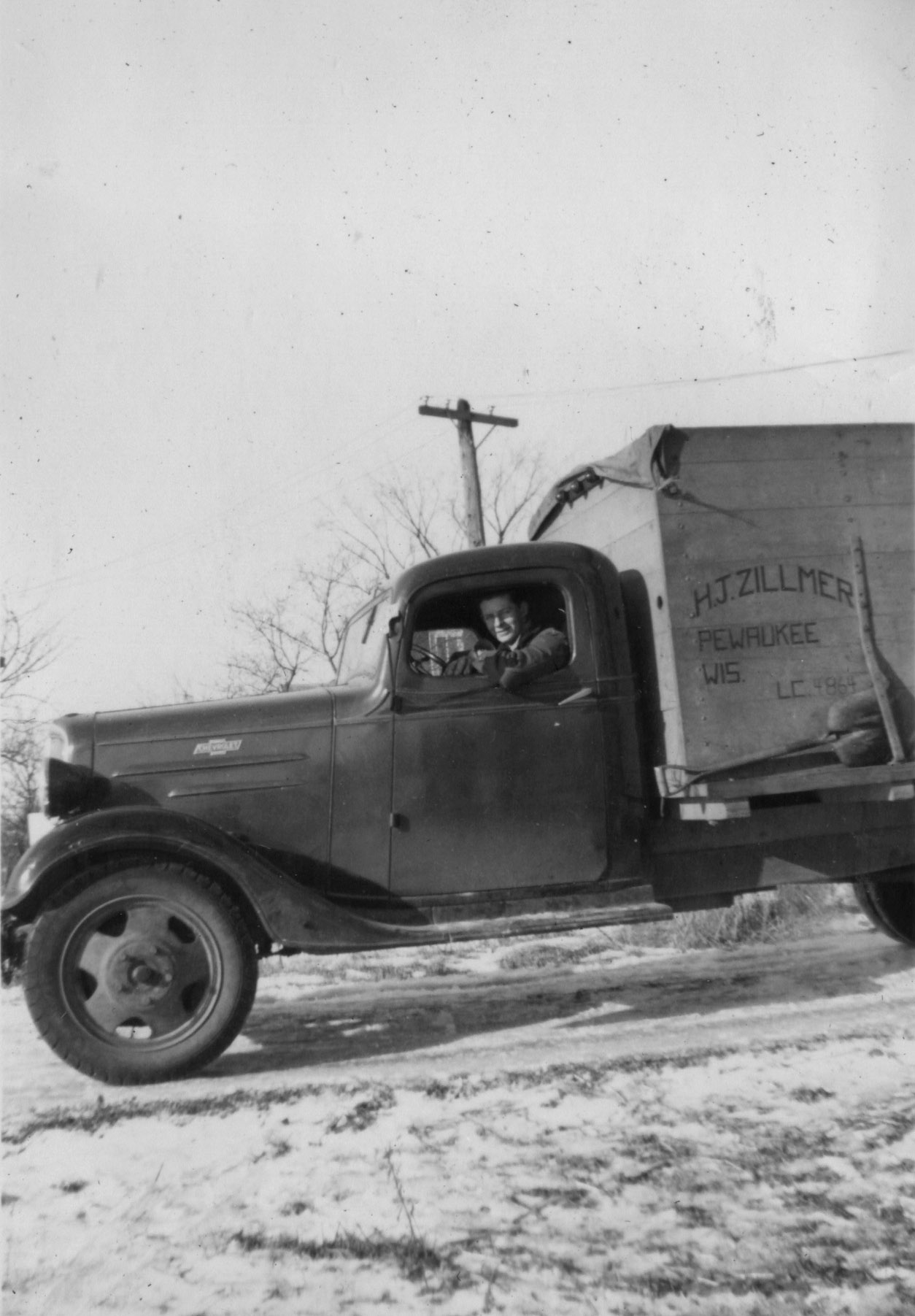 This picture was captioned " Howie." Mr. Zillmer had a truck, was from Pewaukee, Wisconsin, owned a 1930s-era Chevrolet truck, and was friends with the photographer of this album. That's about all we know -- and with this magic of the internet, can anything more be discovered? Not as much as you might think -- Howie could certainly be "Howard Zillmer" -- the internet brings us a flyer from a church in Florida that lists Zillmer's birthday as January third -- Florida's quite a ways away from Wisconsin, though. 2003 brought us the obituary of a Howard Zillmer's mother, Augusta, who had been born in 1910 and lived in Pewaukee. Howard E Zillmer enlisted in the military in Milwaukee shortly after World War II broke out, but -- also in Milwaukee -- Howard R Zillmer held out until '43. Our photogenic Howard, however, looks older than any of the possible Howards on the internet. If internet archives have slowly reached back to the '40s, maybe eventually we'll be able to find Howie. Until then, he's remembered for driving his grain truck past Ruth. Labels: 1930s, 1938, chevrolet, pewaukee, truck grain, wisconsin history
A Sea Of Hats: Farm Foreclosure Sale
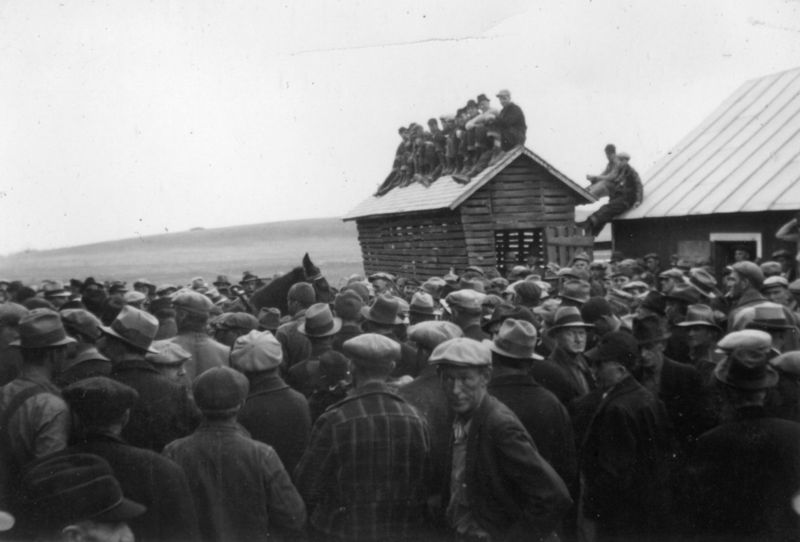 This image This image, one of two captioned "At Uncle Nick's Auction," shows a common sight around the rural USA during the 1930s. No, not just a crowd of fedoras and paperboy hats (although those were quite common, especially at the employment office or the bread lines). Farm foreclosures were driven by the Great Depression, a sluggish economy, a prewar slump due to foreign instability, and the ongoing change from a raw-materials economy to a manufacturing economy. This one appears to have been taken in 1938, after the "heyday" of foreclosures in the early 1930s. Early on, farmers protested and caused 'penny auctions' -- friends and neighbors ran off genuine bidders, and never bid more than a penny for any lot. By the late 1930s the worst of it was over, some economic reforms were starting to help, and this auction was probably handled better than frantic bank-recoveries earlier in the decade. Also: farmer's diary * iowa depression * nebraska foreclosures * remembering farm life Labels: 1930s, 1938, antique photo, farm life, wisconsin history
Claiming Her Own Nickname
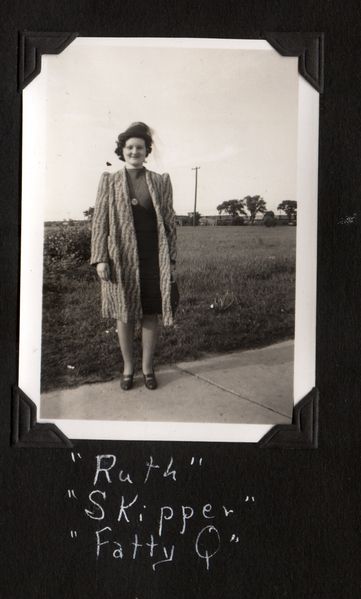 Here, to the right Here, to the right, is Ruth. She once had a photo album of her life in the late 1930s, which I've started scanning recently. On the second page of the album, she has a series of captioned photos captioned as a dramatis personae, identifying the players in her life. Her self-portrait includes several nicknames -- "Fatty Q" being one of them. While not the lithest of ingenues, Ruth isn't obese, so that might be why she's accepted the nickname without offense. The nickname of 'Skipper' is interesting, too. The two things we associate 'skipper' with -- the fat guy on Gilligan's Island, and Barbie's sister -- were decades away from Ruth's life. Captaining a boat was the main definition, although 'one who skips' could mean she either has a slight jump in her step, or maybe she prefers to avoid going to class. Either way, Ruth has two 1930s nicknames that she was proud enough to own to save it for her kids to see: I hope she was still as proud of them years later. Labels: 1930s, 1938, vintage photo, wisconsin history
Sittin' on Grandpa
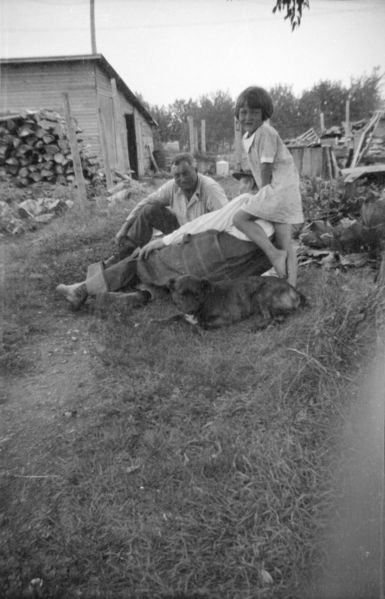 On a hot summer day, sittin' on grandpa is the funnest thing for a pixie-cut girl to do. This photo hails from the late 1930s in rural Minnesota, and is the kind of candid real-life photo you hope to see out of dozens of posed, dour pictures of family members. It's also a part of the farm photos don't usually get taken at --nobody poses in front of the junk pile for a family picture. The jungle-gym is clearly Grandpa: he looks much the same in nearly every photo, up until the 50s. The guy sitting up, I'm unsure who he might be, possibly a hired hand. As a farm kid, I remember those summer days -- "I'm bored; I should go bother Grandpa for a while." Turns out, Grandpas usually spend all day hoping the grandkids stop by to interrupt his work. Labels: 1930s, early 20th century farm photos, farm life, grandkid, grandpa
Laziness and the P.W.A.
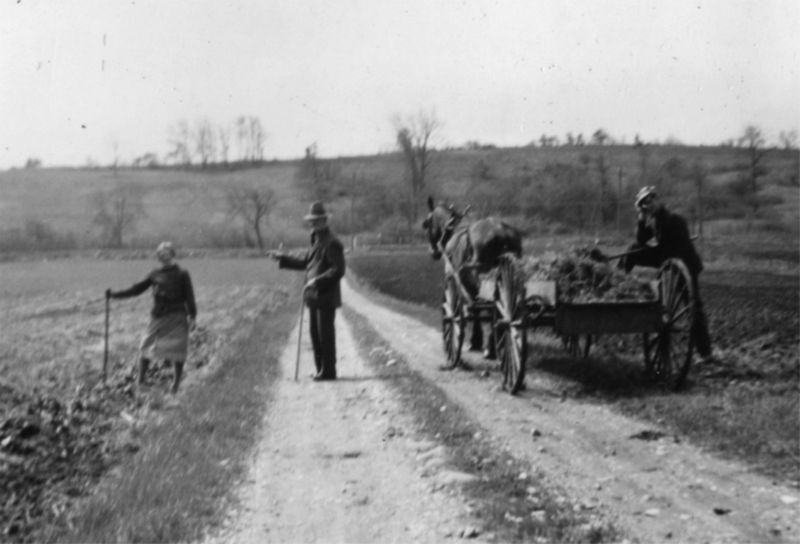 In 1933, the US government starting putting a large amount of money into public works, helping the economy, building communities, and keeping people working. The PWA, or Public Works Administration, did a lot of high-profile work, but the PWA helped communities and projects of all sizes. This picture was captioned "P.W.A. Workers" -- however, they look hardly like a PWA project. The owner of the photo album had a sense of humor; the PWA (and its relative, the WPA) had a somewhat undeserved reputation for laziness. Ms. Photographer, it seems, saw a woman in the field -- and the guys not working -- as representative of the PWA, whether or not their paychecks came from the New Deal or not. see also: the pwa *pwa thoughts * *pwa and nat'l parks * the wpa * wpa murals * wpa in georgia * wpa postersLabels: 1930s, 1938, farm life, farming, public works administration, pwa, wisconsin history, wpa
1930s Nicknames
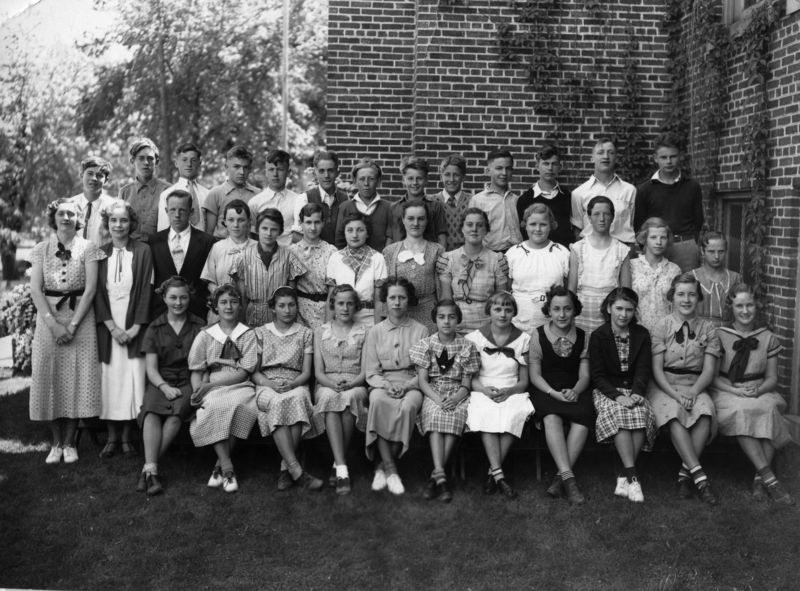 High school -- a time of nicknames and rivalries no matter when you were born. This photo, from a photo-album of the late 1930s, has some evidence on the front. That girl in the front row in white -- right in the middle -- has her eyes blacked-out with pencil (you can see it in the large version). On the back were, presumably, well-wishes from student's friends, names written in the hand of the signer. Underneath the photo, written on the page in the photo album, are a clearer picture of the students identities: "Bruno", "Giggling Gertie", "Ossie" -- and I think that's just the girls. Labels: 1930s, 1938, antique photo, high school, notes
Riding the Red Comet
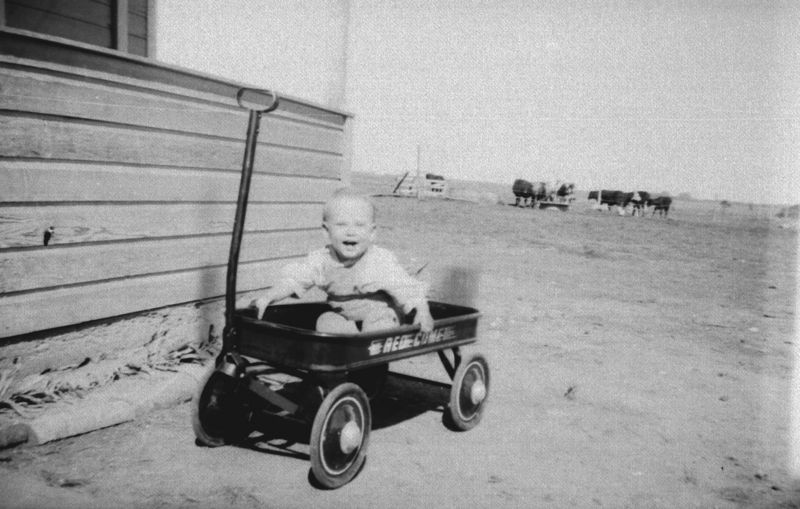 From an overexposed image, adjusted with Photoshop. This Red Comet, a fine steel wagon with rubber wheels, was probably a big gift for a kid back 'in the day' - no Toys R Us, and not a lot of money, meant not a lot of toys to go around. A wagon gave a kid transportation: load up the dog, fill it with rocks, drag around a sibling, all kinds of things beyond the scope of two little arms. Also, for a mom whose arms are already burdened with all kinds of carrying, a kid can be pulled along behind when working in the yard. Big rubber wheels and high clearance allowed for off-road travel. See also: radio flyer * how wagons are made * thoughts on red wagon originsLabels: 1930s, early 20th century farm photos, little red wagon, toy
|  |
|
|












